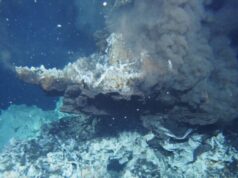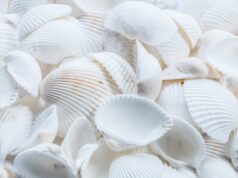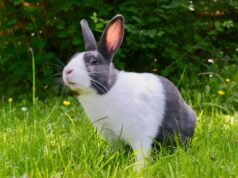Ninety-three years ago, a scientist trapped a mouse in a stream in Ethiopia. Of all the mice, rats, and gerbils in Africa, it stood out as the one most adapted for living in water, with water-resistant fur and long, broad feet. That specimen, housed at Chicago’s Field Museum, is the only one of its genus ever collected, and scientists think it may now be extinct. But in a new study in the Zoological Journal of the Linnean Society, researchers have verified this semi-aquatic mouse’s closest cousins, including two species new to science.
“These two groups of mice have been confused with one another for a century,” says Julian Kerbis Peterhans, one of the paper’s authors and a researcher at the Field Museum who’s studied these rodents for over 30 years. “They’ve been so elusive for so long, they’re some of the rarest animals in the world, so it’s exciting to finally figure out their family tree.”
“It’s underappreciated how little is known about the biodiversity of small mammals, especially in tropical parts of the world. We’re not discovering a whole lot of new lions, tigers, and bears, but there’s an incredible potential for discovery of new species of small mammals because they’re tough to find,” says Tom Giarla, the paper’s lead author and an assistant professor of biology at Siena College in New York. “And they’re sort of underappreciated animals—they’re really cool when you start to learn about their ecology. These are semi-aquatic mice, so they’re not just your average, everyday rodents.”
There are two main kinds of mice that the researchers focused on: Nilopegamys and Colomys. Nilopegamys (meaning “mouse from the source of the Nile”) is the genus that’s only known from one specimen collected in 1927; the genus Colomys is a little easier to come by, but still difficult to find. While Nilopegamys has only been found in Ethiopia, Colomys have been found throughout the Congo Basin and into the western part of the African continent.
Colomys‘s name roughly translates to “stilt mouse” for its elongated feet that let it wade in shallow streams to hunt for water-dwelling insects like caddisfly larvae. “These mice are long-footed, kind of like a kangaroo. They sit up on their haunches, and they wade through shallow streams with their whiskers on the water’s surface detecting movements, like sonar,” says Kerbis Peterhans. They have unusually large brains in order to process this sensory information from their whiskers when they hunt. They’re cute, too, he says: “When I caught my first one some 30 years ago, it was the most beautiful African mouse I’d ever seen, it had water repellent fur that’s very thick and lush and warm and cozy. They’re incredibly soft, and they have this remarkable snow-white belly.”
Find your dream job in the space industry. Check our Space Job Board »
But since they spend their time by water, they’re hard to catch. They prefer shallow streams so that they can use their whiskers to help them hunt, but they’ve also been found in swampy areas and even rivers that are 3-4 feet deep in places (they hang out by the shallow edges). “To cross one of the rivers where I caught a Colomys, you have to use walking sticks, the water’s up to your waist,” says Terry Demos, a postdoctoral researcher at the Field Museum and another of the paper’s authors. “And you can have torrential rain in the tropics, so sometimes half the traps get swept away, and you have to go downriver to try to find them.”
For this study, the researchers conducted the first evaluation of Colomys throughout its broad range, drawing from new field work and museum collections. They compared the animals’ physical traits and analyzed their DNA. The analyses revealed that within the Colomys genus, there were two new species that had not yet been described. They’ve been named Colomys lumumbai and C. wologizi, after, respectively, Congolese independence leader Patrice Lumumba and Liberia’s Wologizi Mountains. The researchers also found that one subspecies actually constituted its own separate species, and revised the range of another species.
Giarla was also able to extract DNA from a piece of dried tissue on the skull of the 93-year-old specimen of Nilopegamys in the Field’s collections. “When you’re working with these this ‘ancient DNA’ or ‘antique DNA,’ you have to treat it differently. There can’t be any contaminating DNA present, because that could ruin your whole study,” says Giarla. “I was stunned that I actually got it to work on my first try.” The DNA showed that Nilopegamys is a sister genus to Colomys: its closest relative.
Learning about the different species of mice in streams halfway around the world has broad implications for conservation science. “The new species we named are part of a global effort to understand the biodiversity of African rainforests and highlight the critical areas to be preserved,” says Demos. “There are vast areas of the Congo Basin that have barely been explored in the last seventy years, places that are hard to access due to political instability. We’re not even completely sure how these animals are distributed, there are big gaps.”
The findings could even help inform public health efforts down the line. “COVID is a zoonotic disease, and biodiversity research is essential to understanding zoonotic disease,” says Giarla. “We need to understand what species are present in natural areas, especially natural areas being changed by humans.” (It’s worth noting, the mice in this paper aren’t known to carry diseases that affect humans—studying them and other animals can help scientists get a better baseline of which species live where, and that can help pinpoint zoonotic diseases in the future.)
The researchers also note that their research was made possible by a large international network of scientists. “If you look at the author list, but we have people from all over the world,” says Giarla. “We have colleagues in Africa and Europe and the United States. Museums in the Czech Republic, Germany, the US, South Africa, Eswatini. We had people all over the world helping us with this effort: field workers, geneticists, morphologists. Science is a really global effort.”
More Information: Thomas C Giarla et al. Integrative taxonomy and phylogeography of Colomys and Nilopegamys (Rodentia: Murinae), semi-aquatic mice of Africa, with descriptions of two new species. Zoological Journal of the Linnean Society (2020). DOI: 10.1093/zoolinnean/zlaa108
Image: An illustration of one of the newly-described species of stilt mouse, Colomys lumumbai, wading in a stream to hunt.
Credit: Velizar Simeonovski, Field Museum











